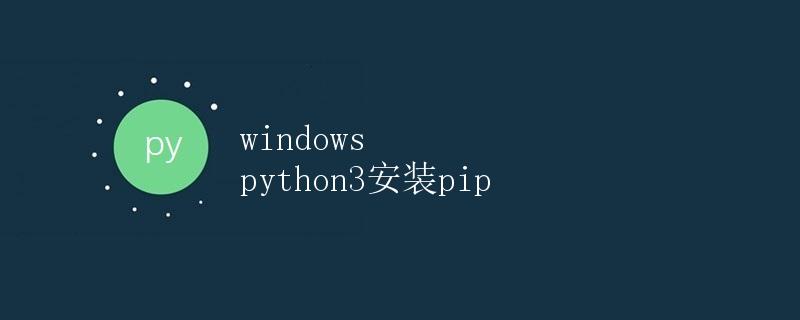Install pip on Windows Python3
Installing pip on Windows Python 3

What is pip?
PIP is a package manager similar to the Python package manager. pip is a package management tool like npm for Node.js or bundler for Ruby. Python packages can be easily installed, upgraded, and managed using pip.
Installing Python 3
Before installing pip, you must first install Python 3. You can download the latest Python installer from the official Python website (https://www.python.org/downloads/). During installation, be sure to check the “Add Python to PATH” checkbox so you can launch the Python interpreter directly from the command line using the python command.
After installation, verify that Python has been successfully installed by entering the following command from the command line:
python --version
If the installation is successful, the Python version number will be displayed.
Installing pip
After installing Python 3, pip should be automatically installed. You can verify that pip is successfully installed by entering the following command in the command line:
pip --version
If the installation is successful, the pip version number will be displayed.
If pip is not installed, you can manually install it by following the steps below:
- Download the get-pip.py file. You can download the latest get-pip.py file from https://bootstrap.pypa.io/get-pip.py.
-
Open a command line, navigate to the directory containing the get-pip.py file, and run the following command to install pip:
python get-pip.py
- After installation, run the following command again to verify that pip is successfully installed:
pip --version
Using pip to install Python libraries
After installing pip, you can use pip to install Python libraries. To install a Python library (using the requests library as an example), enter the following command in the command line:
pip install requests
This will allow you to install Python libraries using pip.
Updating Pip
Pip also requires regular updates to get the latest features and bug fixes. You can update pip with the following command:
pip install --upgrade pip
This will update pip to the latest version.
Uninstalling Pip
If you need to uninstall pip, you can use the following command:
python -m pip uninstall pip
This will uninstall pip.
Summary
Installing pip on Windows is very simple. You just need to install Python 3 and ensure pip is already installed, or you can install it manually. Once pip is installed, you can use pip to conveniently manage the installation, updates, and uninstallation of Python libraries.